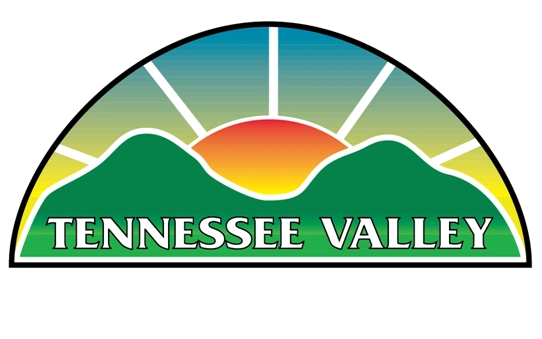Top Signage Trends for 2025: What Businesses Need to Know

As businesses continue to evolve in a digital-first world, the importance of effective signage remains critical. The way brands communicate through signs is transforming rapidly with advancements in technology, sustainability, and interactivity. In 2025, companies that embrace these changes will stand out in an increasingly competitive market. From sustainable signage materials to the use of AI in signage, this year promises to revolutionize the way businesses engage customers through visual communication. Here are the key 2025 signage trends that will shape the industry.
The Rise of Sustainable Signage Materials
Sustainability is no longer an option—it’s a necessity. Consumers and businesses alike are prioritizing eco-friendly practices, and signage is no exception. Sustainable signage materials are becoming the industry standard as companies seek to reduce their carbon footprint while maintaining high-quality branding. Biodegradable substrates, recyclable plastics, and responsibly sourced wood are replacing traditional materials that contribute to environmental degradation. Additionally, advancements in energy-efficient lighting solutions, such as LED and solar-powered signage, are helping businesses lower electricity consumption without sacrificing visibility. The shift towards greener materials is not just a trend; it is an essential evolution in the signage industry.
Another critical aspect of sustainable signage is the rise of modular and reusable sign structures. Instead of discarding outdated signs, businesses are investing in adaptable designs that allow for easy updates and modifications. This reduces waste and extends the life of signage investments. Companies are also exploring non-toxic, water-based inks and coatings to further minimize environmental impact. With regulatory bodies increasingly enforcing sustainability requirements, adopting eco-friendly signage solutions is both a smart business move and a commitment to a greener future.
Digital Signage Innovations: Enhancing Customer Engagement
Digital signage continues to redefine the way businesses communicate with their audiences. In 2025, digital signage innovations are set to enhance engagement by delivering more dynamic, interactive, and personalized experiences. High-resolution LED displays are becoming more affordable, making it easier for businesses to implement eye-catching, ultra-bright screens that grab attention even in outdoor environments. Furthermore, businesses are leveraging cloud-based digital signage solutions that enable remote content updates in real time, ensuring that messaging remains relevant and timely.
One of the most significant advancements in digital signage is the integration of audience analytics. Using smart sensors and cameras, digital signs can now analyze customer demographics and behavior to deliver targeted content. For example, a retail store can display different promotions based on the time of day, foot traffic, or customer preferences. This data-driven approach not only increases engagement but also improves conversion rates by delivering the right message to the right audience at the right time. Additionally, businesses are experimenting with interactive touchscreen signage, allowing customers to browse products, check availability, and even make purchases directly from the screen.
AI in Signage: The Future of Smart Advertising
Artificial intelligence is transforming industries across the board, and signage is no exception. AI in signage is revolutionizing the way businesses interact with consumers by creating intelligent, adaptive displays that respond to real-time data. One of the most exciting applications of AI in signage is predictive advertising, where signs analyze factors such as weather conditions, traffic patterns, and consumer trends to display the most relevant content. For instance, a coffee shop’s digital sign might promote iced coffee on a hot day and switch to hot beverages when temperatures drop.
AI-powered chatbots integrated into digital signage are also gaining traction, providing instant customer assistance and recommendations. These smart signs can answer frequently asked questions, guide customers through product selections, and even process orders using voice or touchscreen interactions. Another major development is the use of facial recognition technology in signage, which allows businesses to personalize advertisements based on customer profiles. While privacy concerns remain a topic of discussion, companies are exploring ways to implement AI-driven signage responsibly and ethically.
The automation capabilities of AI in signage extend beyond marketing. Businesses are utilizing AI to monitor and optimize signage performance, ensuring that displays are functioning correctly and content is continuously updated. AI-driven analytics also help companies measure the effectiveness of their signage strategies, providing valuable insights that inform future campaigns. As AI technology continues to advance, smart signage solutions will become even more sophisticated, driving efficiency and engagement like never before.
Augmented Reality Advertising: Blurring the Lines Between Digital and Physical
Augmented reality advertising is set to be one of the most exciting 2025 signage trends. AR technology enhances the customer experience by overlaying digital elements onto the physical world, creating interactive and immersive brand experiences. Businesses are leveraging AR signage to engage customers in ways that traditional static signs simply cannot. By using smartphones or AR glasses, consumers can unlock hidden content, access product information, or even see virtual demonstrations in real time.
Retailers are particularly embracing augmented reality advertising to offer virtual try-on experiences. For example, a clothing store may use AR mirrors that allow customers to see how different outfits look on them without physically trying them on. Similarly, the automotive industry is utilizing AR signage to showcase vehicle features and customization options in an interactive format. AR signage also plays a vital role in tourism and entertainment, where historical sites, museums, and amusement parks use AR-enhanced signs to provide engaging storytelling and navigation.
The integration of AR into signage is not just about entertainment—it’s a powerful tool for boosting sales and customer satisfaction. Businesses can use AR to gamify their marketing efforts, offering incentives, discounts, and exclusive content to users who engage with their AR-enabled signs. As AR technology becomes more accessible and affordable, its adoption in signage will only continue to grow, offering brands a new way to captivate and connect with their audiences.
The Future of Signage: A Blend of Tradition and Technology
While digital advancements are shaping the future of signage, traditional sign-making techniques still hold value in creating a strong brand identity. In 2025, businesses are blending classic craftsmanship with modern technology to produce signage that is both innovative and aesthetically appealing. Custom hand-painted signs, neon revival designs, and vintage-inspired typography are making a comeback, offering a nostalgic charm that resonates with consumers. This fusion of old and new allows businesses to stand out in an increasingly digital world.
Personalization is another key focus in the future of signage. With the ability to collect and analyze consumer data, businesses can tailor signage content to individual preferences, making brand messaging more relevant and effective. Whether through AI-powered recommendations, location-based targeting, or interactive displays, the shift towards personalized signage is set to enhance customer experiences and drive brand loyalty.
The role of signage in smart cities is also expanding. From wayfinding systems that integrate with mobile apps to digital billboards that provide real-time updates on local events and emergencies, signage is becoming a crucial part of urban infrastructure. As 5G technology continues to roll out, the possibilities for connected and intelligent signage solutions will only increase, making cities more efficient and user-friendly.
Conclusion
The signage industry is undergoing a transformation, with 2025 bringing new opportunities for businesses to innovate and engage with their audiences. From sustainable signage materials to the integration of AI in signage and the rise of augmented reality advertising, staying ahead of these trends is essential for brands looking to make a lasting impression. As businesses adapt to these advancements, the future of signage will be defined by a seamless blend of creativity, technology, and sustainability.
Need a Sign Shop in Scottsboro, AL & the Surrounding Huntsville Area?
Here at Tennessee Valley Sign & Printing, Inc., we’re here to bring your vision to life! Whether you need eye-catching signs, professional-grade business cards, vibrant banners, or custom-printed apparel, our team is ready to deliver quality solutions tailored to your needs. With over 30 years of expertise serving Alabama and Tennessee, we pride ourselves on helping businesses stand out. Reach out to us today, and let’s talk about how we can make your ideas a reality. Call now for your free estimate—we can’t wait to work with you!
